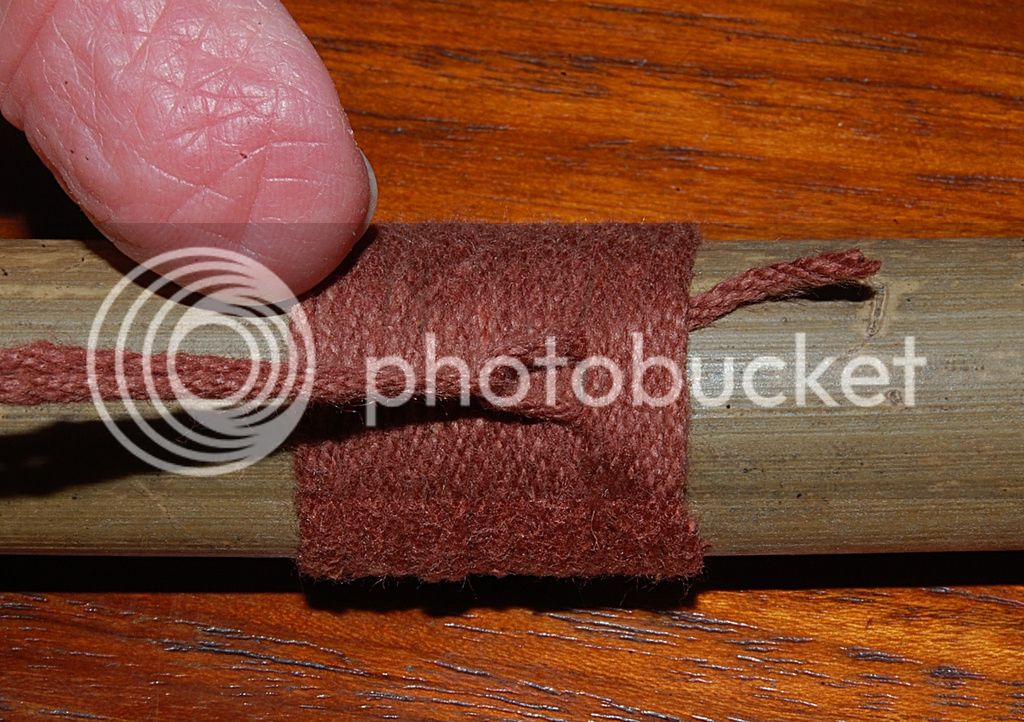You are going to wrap cord around the spout perpendicular to the spout. Start by laying a short end of your wrapping string parallel to the center line of the spout, enough so that 4-5 wraps will cover it. Hold it in place and wrap over it, keeping everything snug. Keep wrapping until you are within 3-4 wraps of the end, stop and hold everything snug. Fold a short length of cord double and lay it over the wraps, again parallel to the center line, with the fold out front, toward the end of the spout. Continue wrapping, over the folded cord, and you will have a loop out front, trapped under the wraps. When you reach the end of the wraps, stick the end of your wrapping thread through that loop, snug everything up, cut the loose end about 4-6 wraps long. Now, pull the loose end under the wraps with the loop and bob's your uncle. Both starting and ending ends are buried.
Use well waxed string/cord, it will be much easier to pull through, and it will last a lot longer. I use beeswax, and will melt and drip a little on the new wraps and rub it in.
Spence
















 :redface:
:redface: 